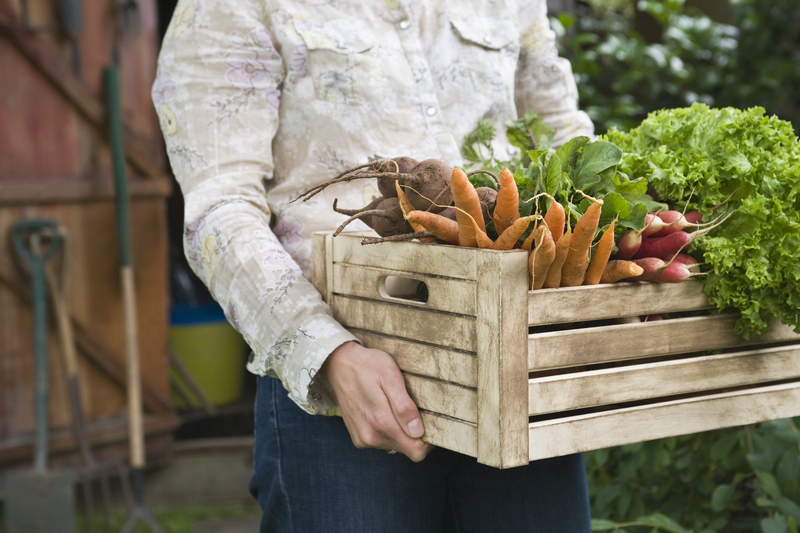Simple Ways to Protect Your Garden from Your Pooch
Posted on 02/06/2025
Simple Ways to Protect Your Garden from Your Pooch
If you're both a dog lover and a plant enthusiast, you know how hard it can be to keep your garden safe from your pooch. While dogs bring joy, energy, and companionship to our homes, their playful digging, chewing, and bathroom breaks can create problems for your garden beds and landscaping. But don't worry--it's completely possible to design a pet-friendly garden that stays healthy and beautiful while allowing your pup room to roam. In this guide, we'll cover simple, effective methods to protect your garden from your dog, ensuring that both your plants and your furry friend can thrive together in harmony.
Why Do Dogs Damage Gardens?
Before we figure out how to protect your garden from your dog, it helps to understand why dogs are drawn to our flowerbeds, lawns, and veggies. Dogs are naturally curious and full of energy. Common gardening issues caused by dogs include:
- Digging--whether because of boredom, scent trails, or cool soil
- Chewing on sticks, plants, or mulch
- Flattening or trampling plants while running or playing fetch
- Using the garden as a bathroom, leading to yellow patches or damaged crops
- Barking and chasing wildlife, like birds or squirrels
Understanding these behaviors is the first step to finding peaceful and effective solutions. So how can you achieve a dog-proof garden without sacrificing fun or aesthetics?

Practical Tips for Protecting Your Garden from Dogs
Let's explore actionable steps and strategies you can implement, no matter the size of your yard or the temperament of your canine companion.
1. Create Clearly Defined Paths
Dogs are much less likely to trample plants if you show them where to go. Set up walkways using mulch, gravel, or pavers. These surfaces are gentle on paws and help guide your dog's movement through your garden. Training your pet to use these paths with treats and positive reinforcement helps reinforce good habits.
2. Build Barriers Around Delicate Areas
Physical barriers are one of the most effective ways to protect sensitive garden zones. Consider:
- Sturdy fencing--from decorative pickets to affordable wire mesh
- Temporary fencing for new seedlings or newly planted beds
- Chicken wire cages around prized plants or vegetables
- Raised beds that make it harder for dogs to reach
If you prefer a more natural look, use dense shrubs or thorny bushes (non-toxic to pets, of course) as living barriers. This approach both beautifies and safeguards your garden.
3. Choose Dog-Resistant Plants
Some plants, such as tough ornamental grasses and bushy shrubs, survive canine encounters better than others. Try incorporating the following hardy, dog-friendly plants into your landscape:
- Lavender and rosemary (strong scents discourage digging)
- Boxwood and juniper (dense, robust)
- Russian sage
- Daylilies (non-toxic)
Always verify that your garden plants are non-toxic to dogs using resources like the ASPCA's plant database. For extra protection, avoid plants with loose dirt around the roots, as these are prime digging spots for playful pups.
4. Provide Distractions and Entertainment
Many dogs damage gardens out of boredom. Be sure to offer your pet plenty of engaging alternatives outside:
- Interactive toys and puzzles
- Designated digging areas--fill a sandbox or a specific corner with soft soil and bury treats or toys to focus your dog's digging energy there
- Agility equipment or fetch space to burn off excess energy
If your pet is happily busy, they'll be less interested in your carefully tended flowers and vegetables.
5. Discourage Digging and Bathroom Accidents
Dogs love to dig, especially in newly turned soil. To make your garden less appealing for this behavior:
- Cover bare soil with mulch, stones, or chicken wire laid flat over beds
- Sprinkle harmless deterrents--citrus peels, vinegar, or commercial repellents--in frequently targeted areas (test first to avoid harming plants)
- Install motion-activated sprinklers to gently startle pets away from off-limits beds
When it comes to bathroom habits, train your dog to use a specific gravel or sand area. Clean up waste promptly and reward your pet for using the right spot. This not only protects your garden but also keeps the yard pleasant for everyone.
6. Use Safe Mulches and Borders
Some types of commercial mulch, like cocoa mulch, can be dangerously toxic to dogs. Stick to pet-safe options such as:
- Pine, cedar, or hemlock bark
- Pea gravel in paths or digging zones
- Shredded leaves or straw
Well-defined borders--using stone, brick, or metal edging--can help keep energetic pups out of flower beds and vegetable patches.
7. Train Your Dog with Positive Reinforcement
Lasting success with a dog-friendly garden depends on training as much as landscaping. Use positive reinforcement techniques to teach your dog garden boundaries. Reward your pup each time they stay on paths or out of protected areas. Redirect gently when they wander or dig where they shouldn't. Consistency is key!
A well-trained dog combined with physical boundaries makes for the best long-term solution.
Creative Dog-Proof Garden Design Ideas
Why not turn your outdoor space into a haven for both you and your pooch? Here are some inspiring ways to blend form and function:
- Dog runs: Create a fenced corridor or path that lets your dog zoom safely between your favorite plant beds.
- Hidden compost bins: Avoid canine curiosity by covering or enclosing mulch and compost heaps.
- Tunnel or shaded hideaways: Perfect for dogs that dig to find a cool spot in summer.
- Accessible water stations: Keep bowls of fresh water available so dogs don't dig hoping to find moisture.
With thoughtful design, your dog-proof garden can become a unique, harmonious space for every member of the family.

Common Questions About Dog-Proofing Gardens
What are the most effective dog deterrents for gardens?
Physical fences and barriers are the most reliable methods. Harmless deterrent sprays based on scents dogs dislike (like citrus or vinegar) can also help, but ongoing training yields the best long-term results. Avoid anything that could irritate your pet's skin or cause harm.
How can I stop my dog digging up flower beds?
Use a combination of barriers, deterrents, and distraction. Reinforce surface protection with chicken wire, and provide a designated digging spot as a healthy outlet. Training with positive reinforcement is crucial--never punish digging, as it can increase anxiety-driven digging behavior.
Which garden plants are poisonous to dogs?
Many common landscaping plants--including azaleas, oleander, foxglove, daffodils, tulips, and lilies--are highly toxic to canines. When in doubt, consult a veterinarian-approved list or the ASPCA site before planting anything your pooch might sample.
Summary: Enjoy a Safe, Beautiful Garden With Your Dog
It's absolutely possible to protect your garden from your pooch with a little planning, boundary-setting, and creative landscaping. The right mix of sturdy barriers, pet-safe plants, engaging distractions, and consistent positive reinforcement helps both your garden and your beloved dog flourish side by side.
- Design paths and zones for easy navigation
- Enclose or elevate delicate plants
- Pick resilient, non-toxic plant species
- Give your dog healthy outlets for energy
- Train with encouragement and patience
With these simple ways to protect your garden from your dog, you'll soon have a secure, lush space where every member of the family--human or canine--can relax and play. Happy gardening!

